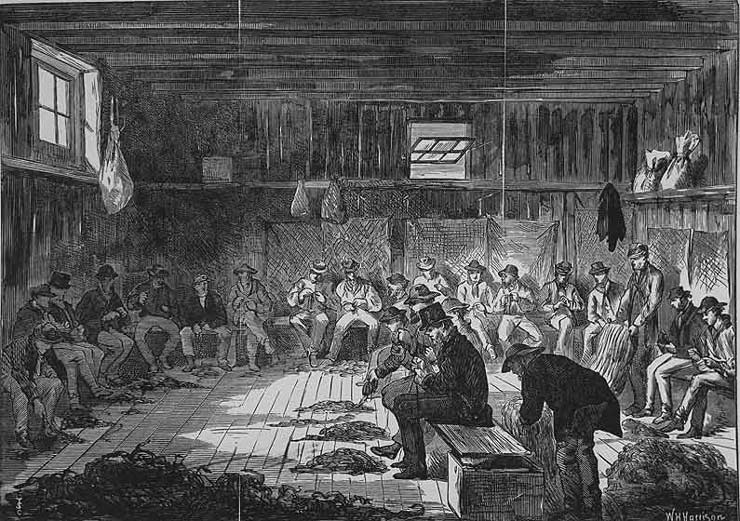 'Night refuge at the Immigrants' Home', c1873
'Night refuge at the Immigrants' Home', c1873
TLF ID R2814
This is a black-and-white print that depicts a group of men taking refuge at the Immigrants' Home in Melbourne. The men, most of whom are seated on wooden benches, are shown in a large common room. They are occupied by an activity that may be the picking of oakum. Sacks either hang from or have been placed on high shelves. The print was taken from a wood engraving made by W H Harrison around 1873.
